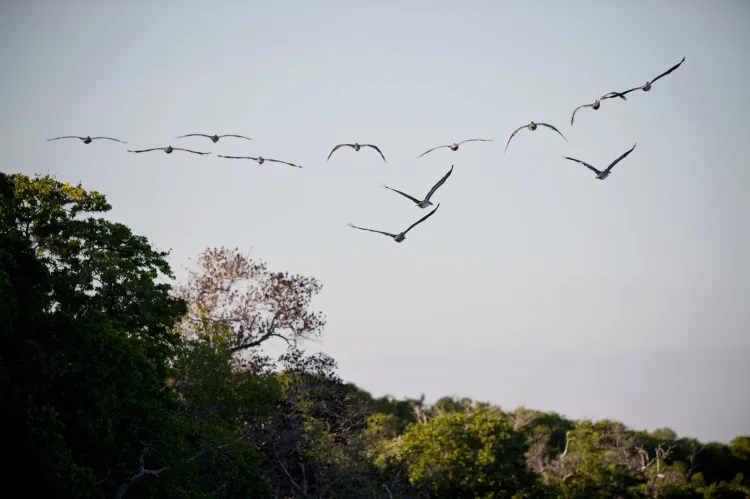How Do Heat Extremes Affect Tropical Birds?

Synopsis
Key Takeaways
- Extreme heat is a major threat to tropical birds.
- Bird populations have declined by 25-38 percent since 1950.
- Even remote forests are not immune to heat-driven declines.
- Immediate action is needed to cut emissions and protect habitats.
- Global biodiversity is at risk due to these changes.
Sydney, Aug 12 (NationPress) Climate change-driven heat extremes have resulted in a staggering decline of 25-38 percent in tropical bird populations since 1950, as revealed by a recent study conducted by Australian scientists.
The research discovered that while variations in average temperature and rainfall have some impact, the predominant climate threat to birds, especially in tropical areas, arises from their exposure to extreme heat. This conclusion was presented in an analysis published on the University of Queensland's website.
Researchers from Australia and Europe examined over 3,000 bird populations from 1950-2020, utilizing weather data to distinguish climate influences from human activities like habitat destruction, based on a dataset comprising 90,000 observations across all continents.
This study, featured in Nature Ecology & Evolution, corroborated previous findings by other climate scientists indicating that occurrences of extreme heat have surged dramatically in the last 70 years, particularly near the equator, as reported by the Xinhua News Agency.
Birds inhabiting tropical zones are currently facing perilously hot days approximately ten times more frequently than in the past, according to the researchers.
The surviving birds may suffer enduring impacts, such as organ failure and diminished reproductive success, as extreme heat compromises their body condition, restricts foraging, stresses eggs and chicks, and can lead to dehydration or abandonment of nests, as indicated by the study.
Researchers cautioned that even isolated and protected tropical forests, which remain untouched by human activity, are witnessing declines in bird populations driven by heat, with climate effects overshadowing direct human impacts.
Considering that nearly half of all bird species reside in tropical regions, these findings present a significant threat to global biodiversity, emphasizing the need for immediate cuts in emissions and protection of habitats to safeguard these species.
Meanwhile, the World Meteorological Organisation (WMO) has raised alarms regarding extreme heat affecting millions globally, with wildfires and deteriorating air quality exacerbating the situation, underscoring the necessity for early warning systems and heat-health action plans.
On August 7, the WMO released a bulletin highlighting data from its members that indicate increasingly frequent global heatwaves and record high temperatures across numerous regions.
According to the EU-funded Copernicus Climate Change Service, July 2025 marked the third warmest July globally (following July 2023 and July 2024).
The average sea surface temperature was also recorded as the third highest ever, while Arctic sea ice extent was noted to be the second lowest for July in a 47-year satellite record, nearly matching figures from 2012 and 2021.
In July, heatwave conditions significantly impacted Europe, particularly in Sweden and Finland, which endured an unusually lengthy period of temperatures exceeding 30 degrees Celsius. Southeast Europe also experienced heatwave conditions and wildfire activity.









